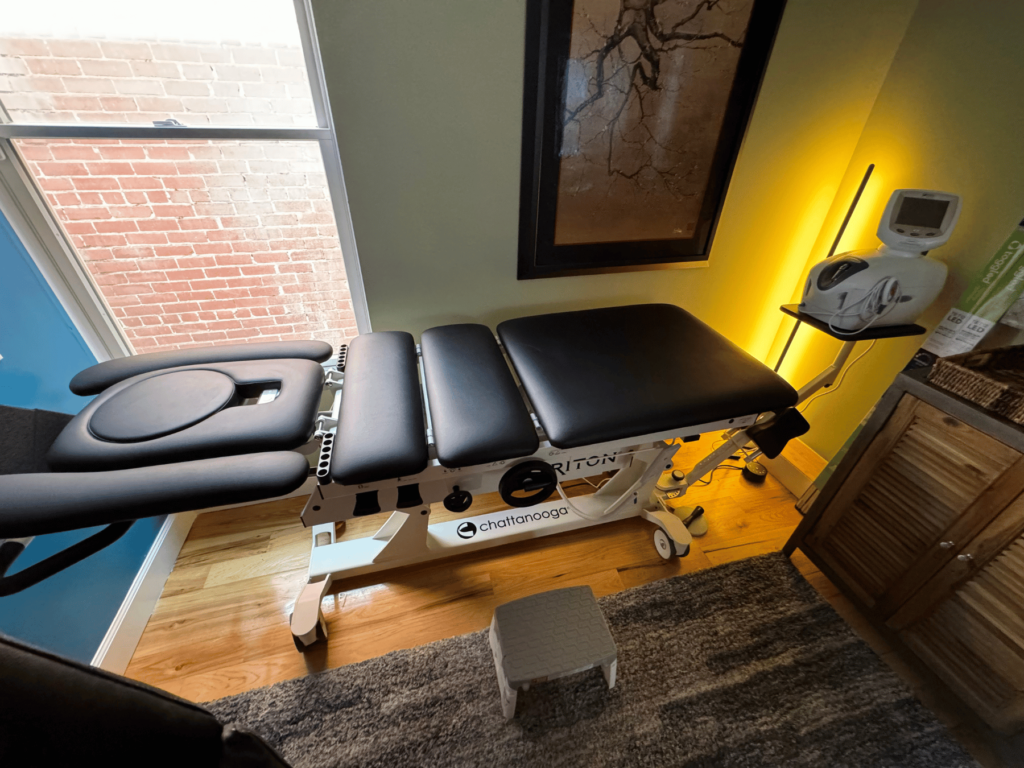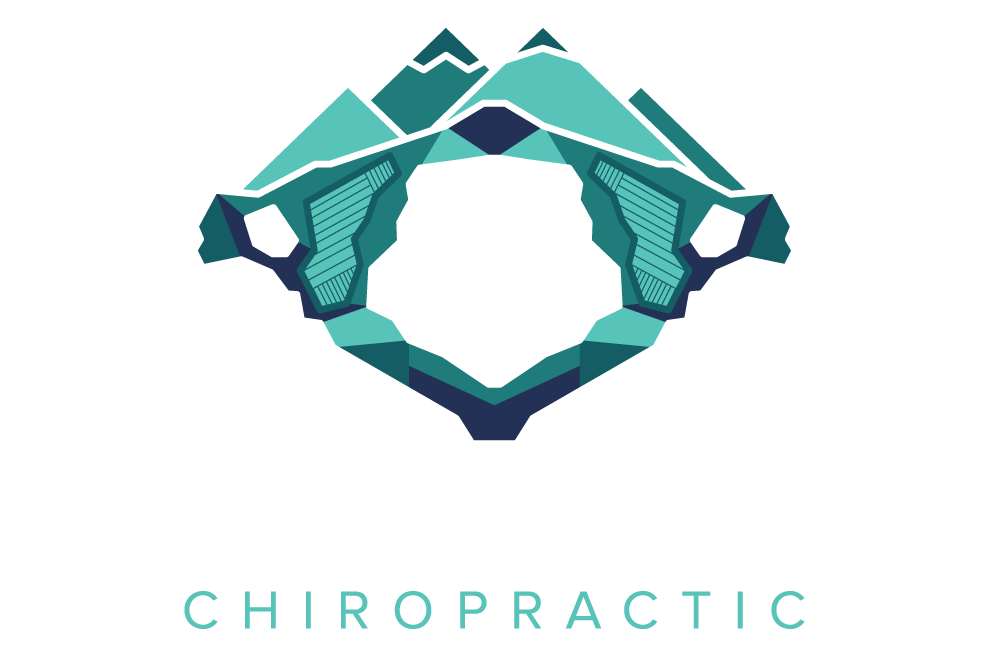If you have persistent chronic pain in your back, neck, or hips, spinal decompression therapy may offer relief. This non-invasive therapy treats the root cause of your pain. This form of therapeutic traction is most helpful for people with disc degeneration, bulging or herniated discs, and radiculopathy (pain radiating into the arms or legs).
Spinal decompression can help a significant percentage of patients without requiring surgery. This is especially helpful for patients with disc issues like loss of disc height that are traditionally treated with surgery alone.
In our office, we’ve seen a significant improvement in pain for patients with disc problems, especially those whose spines don’t respond as quickly to chiropractic adjustments. It’s best when used over multiple sessions, and all of the feedback I’ve gotten is that it’s incredibly gentle and a great help. In fact, we invested in our own spinal decompression table just recently!
Learn more about the benefits of spinal decompression below.
What Is Spinal Decompression?
Spinal decompression is a non-surgical therapy that may relieve back pain and promote the natural healing of the spine. Decompression therapy gently stretches the spine, creating a vacuum effect that helps retract herniated or bulging discs. It’s one of the only effective non-surgical treatment options for disc pain.
A decompression table allows chiropractors greater precision in the target area, especially compared to an inversion table or other forms of traction that don’t let you dial in the tension applied or the region you’re applying tension to.
This safe, painless process also enhances the flow of nutrients, oxygen, and fluids into the spinal discs, further facilitating disc healing and reducing pinched nerves. I find that patients whose spines are most stubborn to respond well to adjustments benefit most from spinal decompression.
Spinal decompression should be performed by a qualified chiropractor. Do not attempt decompression at home. Your chiropractor may recommend targeted at-home stretches that are safe and helpful.
“Spinal decompression” sometimes refers to surgical treatment, but non-surgical decompression therapy is not the same as surgical spinal decompression.
Types of Spinal Decompression Therapy
Below are the most common types of spinal decompression therapy:
- Motorized Traction — This method involves a traction table or similar device intermittently stretching and relaxing the spinal column. Chiropractors and physical therapists often use spinal decompression tables for the most precise results.
- Manual Spinal Decompression — This type is also performed by a chiropractor using instrument-free, hands-on techniques to stretch the spine.
- Surgery — Spinal decompression surgery may include removing vertebra bone (laminectomy) or spinal disc (discectomy). A surgeon may also fuse two vertebrae together with a bone graft.
Back surgery is invasive and more dangerous than the other types but may be needed in severe circumstances.
Our office at Denver Upper Cervical Chiropractic just invested in a new spinal decompression table for our patients. We are seeing incredible results in their quality of life! To schedule an appointment, call 303-955-8270.

Benefits of Spinal Decompression Therapy
According to recent research, the health benefits of non-surgical spinal decompression therapy include the following:
- Pain relief
- Increased range of motion
- More back muscle endurance
- Higher quality of life
- Fewer side effects compared to pharmaceuticals or surgery
Conditions That Spinal Compression May Treat
Non-surgical spinal decompression therapy may benefit these conditions:
- Chronic back pain
- Sciatica
- Spinal stenosis
- Herniated discs
- Degenerative disc disease
- Facet syndrome
Symptoms of a Compressed Spine
It’s vital to recognize the signs of compressed nerves and a compressed spine. If you’re experiencing any of the following symptoms, spinal decompression therapy may be beneficial for you:
- Chronic pain in the lower back, neck, or buttocks — Leg pain, neck pain, or back pain that doesn’t improve with conventional treatments
- Numbness or tingling — Sensations in the arms, hands, legs, or feet
- Weakness — Difficulty moving the affected parts of the body
- Reduced range of motion — Difficulty bending or twisting
Read more: Can Chiropractors Relieve Occipital Neuralgia Pain?
Common Causes of a Compressed Spine
Below are the most common causes of compressed spine symptoms:
- Herniated or bulging discs — Discs protrude and press on spinal nerve roots when herniated or bulging
- Degenerative disc disease — The discs between the vertebrae lose their cushioning in this disease, leading to pain
- Poor posture — Posture misalignments put extra pressure on the spinal cord
- Back injury — Accidents, falls, and other injuries increase the risk of nerve compression and lumbar spine pain
When to Discuss Surgery
In certain cases, conservative treatments may fail to provide relief, and you and your doctor might consider different types of surgery. Here are the signs that orthopedic surgery should be discussed:
- Persistent pain — When non-invasive treatments have failed to improve your symptoms and quality of life
- Severe nerve damage — Evidenced by loss of sensation or weakness
- Loss of bowel or bladder control — Indicating cauda equina syndrome, a surgical emergency
Surgery is rough on the human body and comes with side effects. Risks of surgery include:
- Infection
- Blood clots
- Bleeding
- Nerve damage
- Scarring
- Long recovery period
- Risks associated with anesthesia
How to Prevent Spinal Compression
If you prevent spine compression pain, you may not need expensive treatments. Preventing spinal compression includes adopting a holistic and proactive approach to spinal health.
Below are ways to prevent spinal compression in the first place:
- Practice proper posture — Especially when sitting or lifting objects
- Regularly exercise — Strengthening the core muscles supports the spine
- Maintain a healthy weight — Reducing strain on the spine and back
- Invest in ergonomic workstations — Ensuring your work setup supports spinal health
- Seek professional guidance — Such as from a chiropractor or physical therapist
When Spinal Decompression Is NOT Recommended
Spinal decompression therapy is typically not recommended for the following people:
- Pregnant women
- Those with spine fractures or tumors
- Those with broken vertebrae
- Those who have undergone spinal fusion
- Those who have metal implants in their spine
- Those who have advanced osteoporosis
Other treatments for negative pressure on spinal nerves include general chiropractic, acupuncture, and physical therapy.
FAQs
Seeking Professional Decompression Therapy?
Non-surgical spinal decompression therapy can be an effective treatment for patients who don’t respond as well to standard adjustments due to disc problems like degeneration or herniation. Our office invested in a spinal decompression table for this reason! It’s gentle and can significantly reduce pain.
If you live near Denver, CO, visit us at Denver Upper Cervical Chiropractic! Dr. Ty Carzoli creates individualized treatment plans to heal your spine and improve your quality of life. Call 303-955-8270 to schedule therapy on our new state-of-the-art decompression table.
